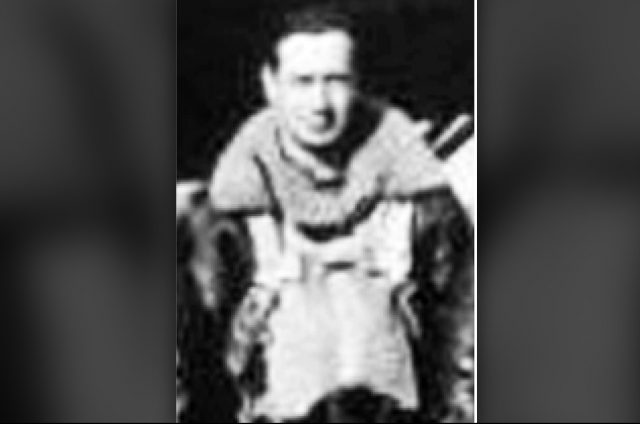WASHINGTON – The Defense POW/MIA Accounting Agency (DPAA) announced today that U.S. Army Air Forces Tech. Sgt. William F. Teaff, 26, of Stubenville, Ohio, killed during World War II, was accounted for April 20, 2022.
In the spring of 1944, Teaff was assigned to the 351st Bombardment Squadron, 100th Bombardment Group (Heavy), 8th Air Force. On March 6, he was the radio operator aboard a B-17 Flying Fortress bomber that was part of a larger mission to bomb targets in Berlin. German fighters attacked the B-17’s formation while it flew over The Netherlands, and Teaff’s plane was destroyed. The entire crew except for the navigator, who was killed when the plane was hit, was able to bail out before the B-17 blew up in the sky. The crew was captured by the Germans and several of them, including Teaff, were sent to Stalag Luft 6, a prisoner of war camp in Heydekrug, Germany. Teaff was one of only three Americans who died in that POW camp. He died July 10 in the nearby village of Matzicken, Lithuania, where he was receiving medical treatment for diptheria.
After the war, the American Graves Registration Command (AGRC), the organization that searched for and recovered fallen American personnel in the European Theater, was unable to recover the three Americans’ remains because Stalag Luft 6, now inside Lithuania because of post-war border shifting, was deep inside the Soviet occupation zone. In 1948, the AGRC provided a list of Americans whose remains were believed to be in Soviet territory to the Soviet government, but Teaff’s couldn’t remains couldn’t be identified. The AGRC provided additional information on Teaff to the Soviets in 1950, but by September 1951, he could still not be found. He was declared non-recoverable on March 25, 1954.
After Lithuania became independent in 1992, the U.S.-Russia Joint Commission on POW/MIAs requested the U.S. Embassy in Vilnius look into Teaff’s case. They discovered the Soviet Union destroyed Stalag Luft 6 in 1955 and reverted the area to farmland. In 2006, a team from the Joint POW/MIA Accounting Command (JPAC), a DPAA predecessor, and the Joint Commission Support Directorate, investigated the site and recommended excavation. However, significant issues prevented them from sending a recovery team. Around this time, the Defense POW/Missing Personnel Office (DPMO), also a DPAA predecessor, found several new sources of information pertaining to the case at the National Archives.
DPAA partnered with Ohio Valley Archeology, Inc. (OVAI) in 2019, and an OVAI team investigated the sight that September, finding possible gravesites for the three missing Americans. A Lithuanian archeological group called Kulturos Vertybiu Globa (Guardianship of Cultural Values) was also active in the area and was planning an excavation of Polish and Lithuanian remains near Stalag Luft 6, so DPAA partnered with them to excavate the possible gravesites, which they did in August 2021. The remains found at the site were transferred to the DPAA Laboratory at Offutt Air Force Base, Nebraska, for analysis.
To identify Teaff’s remains, scientists from DPAA used dental and anthropological analysis, as well as material and circumstantial evidence.
Teaff’s name is recorded on the Walls of the Missing at Netherlands American Cemetery, an American Battle Monuments Commission (ABMC) site in Margraten, Netherlands, along with others still missing from WWII. A rosette will be placed next to his name to indicate he has been accounted for.
The date and location for Teaff’s funeral have yet to be determined.
For family and funeral information, contact the Army Casualty Office at (800) 892-2490.










